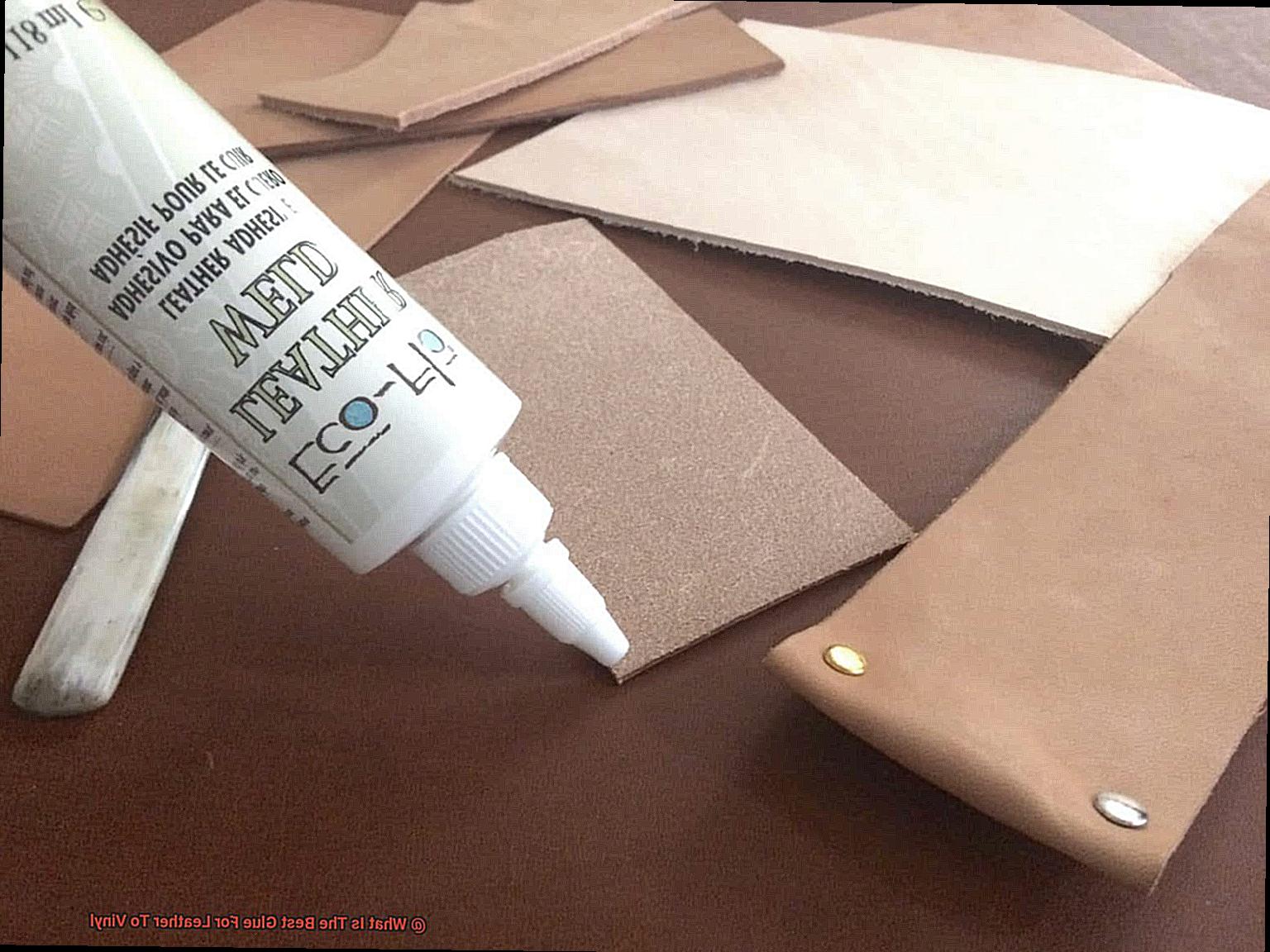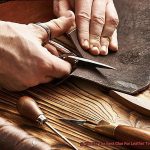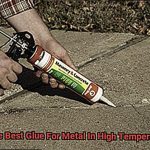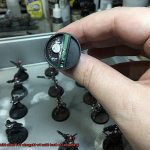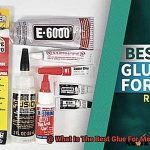Is your leather handbag or vinyl car seat starting to show signs of wear and tear?
The best glue for leather to vinyl is like a superhero in a tube, ready to save the day and give your items a fresh start. This adhesive is specially formulated to create an unbreakable bond between leather and vinyl, so you can say goodbye to those pesky tears and hello to a flawless combination that will stand the test of time.
Get ready to revive your favorite pieces with this magical adhesive.
What is Leather and Vinyl?
Contents
Leather and vinyl are two popular materials used in various industries, each with its own distinct characteristics. Whether you’re a fashion enthusiast or an automotive lover, understanding the qualities of leather and vinyl is essential. In this blog post, we will explore the unique features of these materials and discuss the best glues for bonding leather to vinyl.
Leather:
- Durability: Leather is known for its strength and durability, making it a long-lasting material that can withstand wear and tear.
- Flexibility: Leather is highly flexible, allowing it to conform to different shapes and contours. This makes it ideal for use in products like shoes, bags, and upholstery.
- Luxurious Appeal: Leather exudes a sense of luxury and sophistication, making it a popular choice in fashion and high-end furniture. Its natural texture and grain patterns add to its aesthetic appeal.
Vinyl:
- Affordability: Vinyl is a cost-effective alternative to leather, offering a similar look and feel at a lower price point. This makes it a popular choice for budget-conscious consumers.
- Water Resistance: Vinyl is highly resistant to water, making it ideal for upholstery and automotive applications where moisture resistance is important.
- Easy Maintenance: Vinyl is easy to clean and maintain, requiring minimal effort to keep it looking fresh. A simple wipe with a damp cloth is usually enough to remove dirt or stains.
Bonding Leather to Vinyl:
When it comes to bonding leather to vinyl, choosing the right glue is crucial for a strong and durable bond. Here are some recommended options:
- Contact Cement: Contact cement provides a strong and flexible bond between leather and vinyl. It is easy to apply, as you simply need to coat both surfaces with the adhesive, wait for it to become tacky, and then press them together. This type of glue is commonly used in upholstery and shoe repair.
- Urethane-Based Adhesive: Urethane adhesives offer excellent bonding strength and resistance to water and temperature fluctuations. They create a flexible bond that can withstand stretching and bending without weakening. This type of adhesive is often used in automotive applications where durability is essential.
- Adhesive Tapes: There are adhesive tapes specifically designed for bonding leather to vinyl. These tapes feature a strong adhesive backing that securely attaches the materials together. They are convenient to use and require no drying time, making them a popular choice for quick repairs or temporary fixes.
Why Choose the Right Glue?
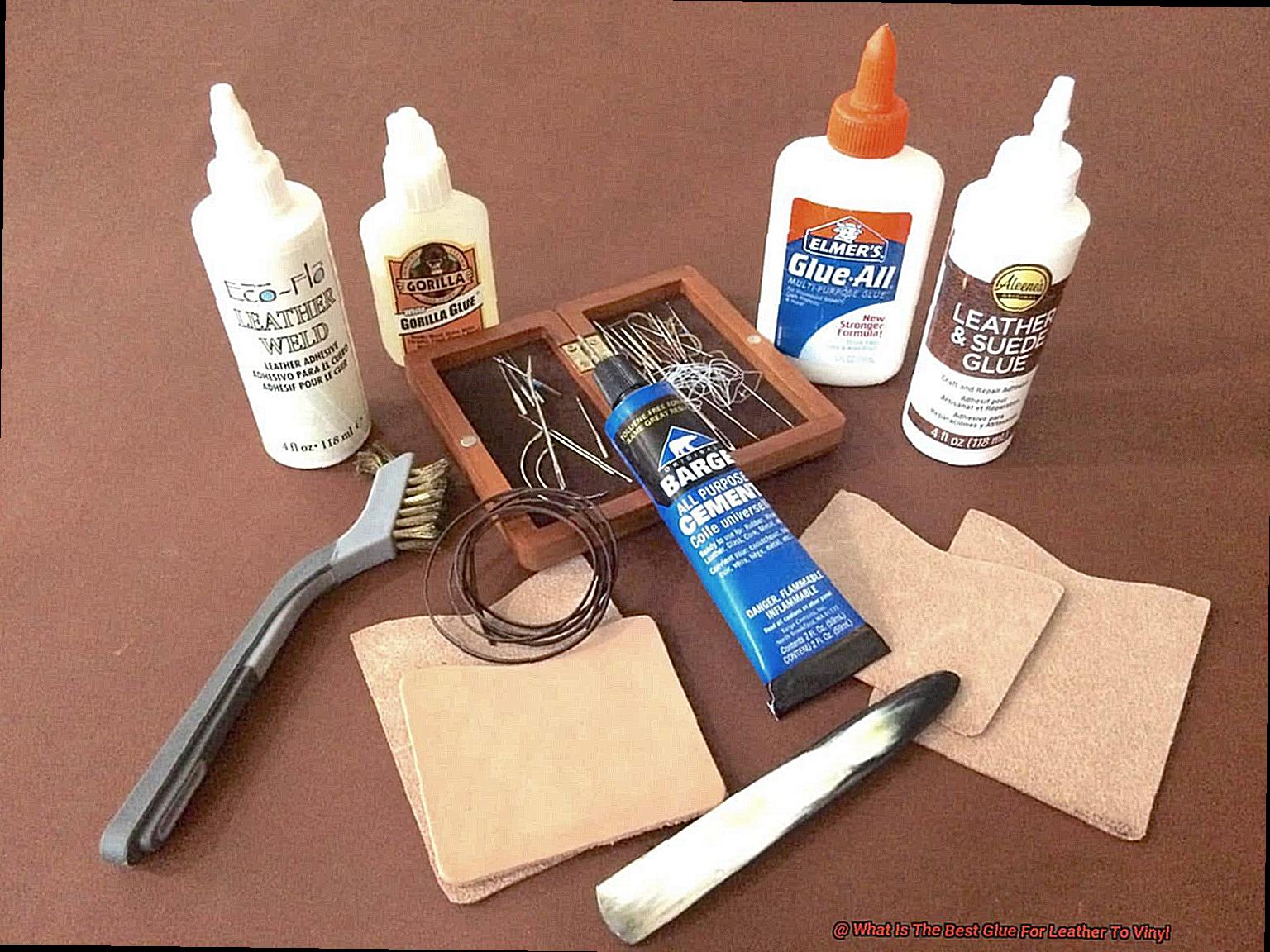
Choosing the right glue when bonding leather to vinyl is not just a matter of convenience – it’s a crucial step that can make or break your project. It’s like finding the perfect dance partner, where the chemistry between them determines the success of the routine. So, let’s dive into why selecting the correct glue for leather-to-vinyl bonding is an absolute must.
Using the wrong glue can have disastrous consequences. Imagine spending hours meticulously attaching leather to vinyl, only to have it come undone shortly after. It would be a devastating waste of time and effort. An unsuitable adhesive can result in a weak bond that won’t stand the test of time. Moreover, it can cause irreversible damage to your precious materials. Nobody wants their beloved leather bag or car seat ruined because of a poor choice in glue.
So, what makes a good glue for leather-to-vinyl bonding? Firstly, it needs to be compatible with both materials to ensure a strong and durable bond. Secondly, it should dry relatively quickly because who has time to sit around and wait for glue to dry? Additionally, flexibility is key – leather and vinyl often need to move and bend, so the glue should be able to withstand this without cracking or peeling.
When it comes to choosing the right glue, you’ll find a plethora of options out there. Some claim to be multipurpose, while others are specifically designed for leather-to-vinyl bonding. However, I highly recommend using a specialized adhesive made explicitly for this application. These glues are formulated with the unique properties of leather and vinyl in mind, ensuring optimal adhesion and durability.
One common mistake many people make is assuming that any old glue will do the trick. However, using generic glues can lead to disappointment and frustration. These glues may lack the necessary properties for proper bonding or worse, they may even damage your materials over time. Always read product labels and instructions before making a purchase.
If you’re unsure which glue to choose, don’t be afraid to seek advice from experts or professionals in the field. They have the knowledge and experience to guide you towards the right adhesive for your specific leather-to-vinyl bonding project. And remember, a little bit of testing and experimentation never hurts – try out different glues on scraps of leather and vinyl to see which one works best before committing to your main project.
Contact Cement Adhesive
Get ready for a glue-filled adventure that will leave you stuck on its advantages.
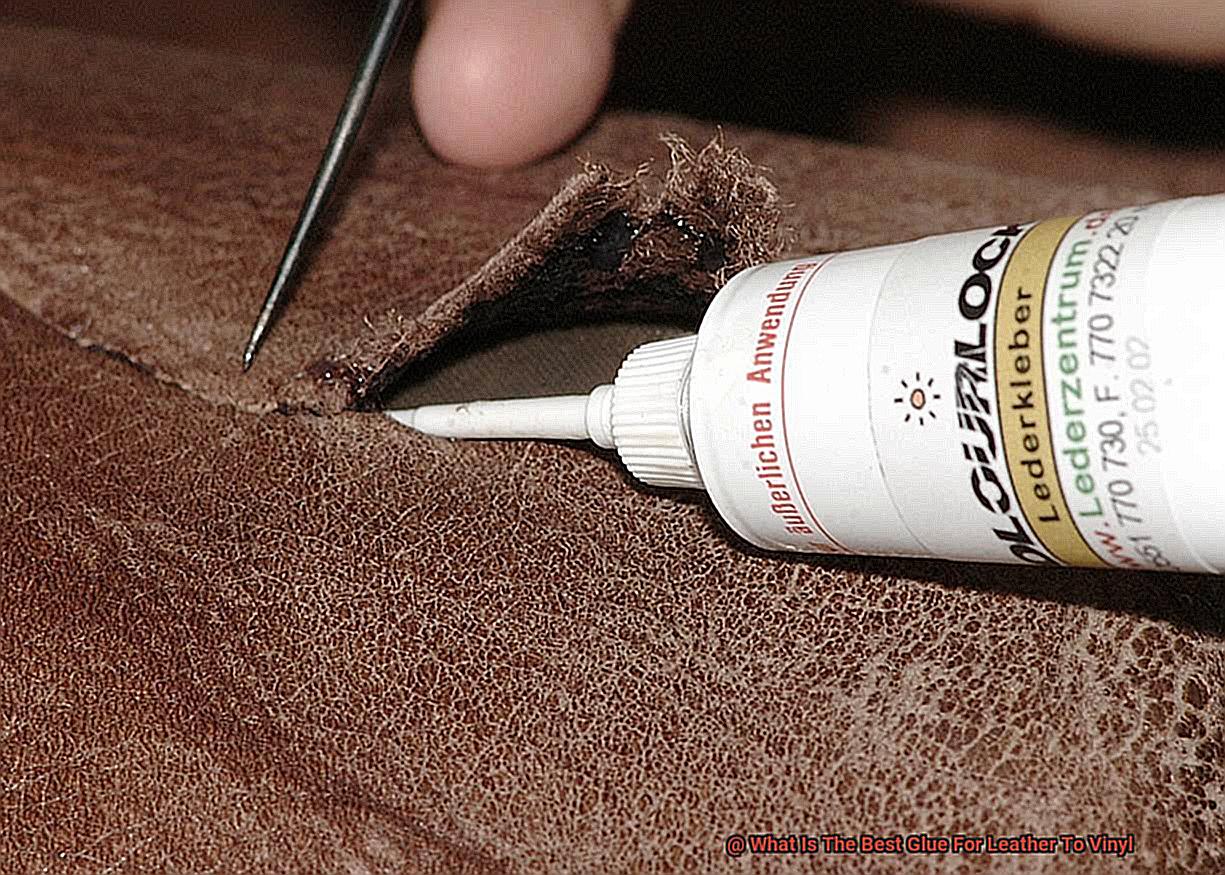
Contact cement adhesive is the ultimate superhero of glues, forming a permanent bond between leather and vinyl materials. It’s like a powerful force that can withstand even the toughest tests. So, why should you choose contact cement over other options? Let’s break it down:
- Versatility: Contact cement adhesive is a true Jack-of-all-trades when it comes to bonding different materials. Leather and vinyl? No problem. This glue can handle it all. Whether you’re repairing your favorite leather bag or creating a brand-new vinyl upholstery, contact cement has got your back.
- Strength and Durability: Imagine spending hours crafting a beautiful leather and vinyl masterpiece, only for it to fall apart at the seams. What a glue disaster. But fear not, my friend, because contact cement adhesive is here to save the day. It forms a bond that can withstand constant stress, tension, and flexing. No more worrying about your hard work going to waste.
- Waterproof Wonder: We all know that water and glue don’t mix well. But contact cement adhesive is like a superhero with an invisible shield against moisture. Once it cures, it becomes waterproof, protecting your bonded leather and vinyl from pesky spills or even high humidity environments. Say goodbye to water damage and hello to peace of mind.
- Flexibility: Leather and vinyl materials need flexibility in their lives, just like we all do. Luckily, contact cement adhesive understands this need and keeps the bond strong even when the materials are bent or flexed. No more cracks or breaks under pressure – this glue is as flexible as a gymnast doing the splits.
But wait, before you dive headfirst into your bonding adventure, let me give you a friendly reminder. Contact cement adhesive can have a strong odor and contain volatile organic compounds (VOCs). So, use it in a well-ventilated area and take necessary precautions, like wearing a mask or using protective gloves. Safety first, my glue-loving friends.
Urethane-Based Adhesives
Urethane-based adhesives are the unsung heroes of the glue world, providing a bond that is as strong as it is flexible. When it comes to bonding leather to vinyl, these adhesives rise above the rest, offering a myriad of advantages that will leave you stuck on their greatness.
First and foremost, let’s talk about flexibility. Leather and vinyl materials can have different levels of give, but fear not. Urethane-based adhesives are like the graceful yoga masters of the adhesive realm. They excel at accommodating this disparity by providing a bond that remains unbreakable even when faced with bending or stretching. Picture your favorite leather jacket – with urethane-based adhesive, you can strut your stuff with confidence, knowing that embarrassing wardrobe malfunctions are a thing of the past.

Now let’s turn up the heat and discuss temperature resistance. We all know how frustrating it is when glue fails under extreme temperatures. But fear not, because urethane-based adhesives are here to save the day. These superheroes are specifically designed to remain stable and maintain their adhesive properties even in the scorching heat or freezing cold. So whether you’re basking in the blistering summer sun or braving the icy winter winds, your bonded leather and vinyl will stay as strong as ever.
But wait, there’s more. Urethane-based adhesives also boast excellent water resistance. Imagine getting caught in an unexpected rainstorm, with your leather and vinyl bag getting soaked. With urethane-based adhesive, you can kiss those worries goodbye. The bond between leather and vinyl will remain steadfast even when exposed to water or other liquids. It’s like having a waterproof shield protecting your prized possessions.
And here’s the cherry on top – urethane-based adhesives are a breeze to use. No need to stress about complicated application methods – these adhesives come in various forms, such as liquids, tapes, or sheets, offering versatility in application depending on your project’s needs. Whether you prefer the precision of a brush, the efficiency of a roller, or the ease of a spray, urethane-based adhesives have got you covered.
Adhesive Tapes for Leather and Vinyl Bonding
Adhesive tapes can be a godsend when it comes to bonding leather and vinyl materials. No more messy liquid glues to deal with. These tapes offer a quick and easy solution that saves you time and hassle. But with so many options out there, how do you know which tape is the right one for the job? Let’s explore some popular choices and tips for successful leather and vinyl bonding.
One top pick for leather to vinyl bonding is double-sided tape. This genius invention has adhesive on both sides, allowing it to stick to both surfaces simultaneously. The convenience and reliability of double-sided tape make it a go-to option. Look for tapes specifically designed for leather to vinyl bonding, as they are made with a strong adhesive that won’t damage your materials.
Another great option is fabric-based tape. These tapes boast a fabric backing that provides flexibility and durability. They adhere well to both leather and vinyl, making them ideal for everyday wear and tear.
Before applying adhesive tape, take the time to properly prepare the surfaces. Clean both the leather and vinyl thoroughly, ensuring they are free from dust or debris. This step is crucial for achieving optimal adhesion and a strong bond.
To apply the tape, cut it to your desired length and carefully place it on one surface. Press down firmly to establish good contact between the tape and the material. Then, align the other surface with the tape and press them together firmly. Apply even pressure across the entire bonded area to ensure a long-lasting bond.
It’s worth noting that not all adhesive tapes are created equal, and some may not adhere well to certain finishes or textures. To avoid disappointment, always test the tape on a small, inconspicuous area before committing to the whole surface.
Common Adhesives That Should Be Avoided
When it comes to bonding leather to vinyl, using the right adhesive is crucial for achieving a strong and long-lasting bond. Unfortunately, many common adhesives that are popular for various applications should be avoided in this specific case.
Using the wrong adhesive can result in weak bonds, damage to the materials, or even a complete failure of the adhesive. In this article, we will explore some common adhesives that should be avoided when bonding leather to vinyl.
Super Glue:
Super glue, or cyanoacrylate, is a popular adhesive known for its fast-drying properties. However, it should not be used when bonding leather to vinyl. Super glue is not flexible and can become brittle over time, leading to the separation of the two materials.
Imagine the disappointment of seeing your carefully crafted leather and vinyl project fall apart due to a weak bond caused by super glue.
Epoxy:
Epoxy is a strong adhesive commonly used for bonding different surfaces. However, it is not recommended for leather to vinyl applications. Epoxy requires a rough surface for proper adhesion, which can damage the smooth surface of vinyl. Additionally, epoxy can harden and become inflexible, compromising the integrity of the bond between leather and vinyl. Don’t let your beautiful leather and vinyl creation suffer from a rigid and compromised bond caused by epoxy.
Hot Glue:
Hot glue guns are often used for quick and temporary fixes. However, hot glue is not suitable for long-term bonding of leather to vinyl. Hot glue tends to dry hard and can weaken or fail under stress or temperature changes. It may also leave visible residue on the surfaces, marring the appearance of your meticulously crafted project.
Rubber Cement:
Rubber cement is commonly used for crafting and minor repairs. However, it is not an ideal choice for bonding leather to vinyl. Rubber cement does not provide a strong bond and can easily peel off or separate over time. Don’t let your hard work unravel due to the weak and unreliable grip of rubber cement.
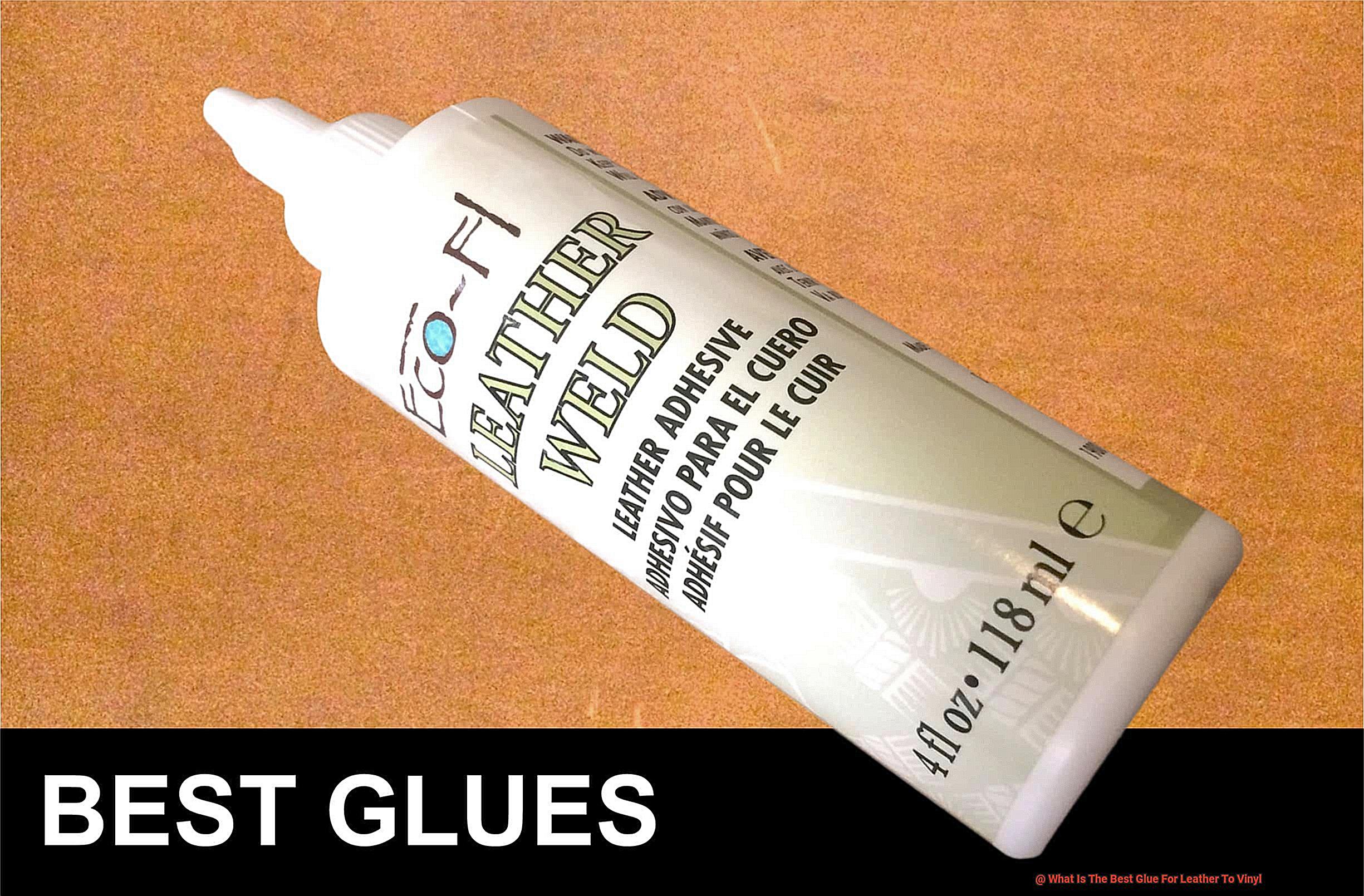
Household Glues:
General household glues like white glue or wood glue should be avoided when bonding leather to vinyl. These glues are not designed for flexible materials like leather and vinyl and may not provide a durable bond. Don’t risk the disappointment of seeing your leather and vinyl project come undone because you used a household glue that wasn’t up to the task.
Spray Adhesives:
Spray adhesives may seem convenient for large surface areas, but they should be avoided for bonding leather to vinyl. Most spray adhesives contain solvents that can damage or discolor vinyl. Additionally, these adhesives may not provide a strong enough bond for the specific needs of leather to vinyl applications. Protect your precious leather and vinyl masterpiece from potential damage caused by harsh solvents in spray adhesives.
Factors to Consider When Choosing Glue
Choosing the right glue is essential for a strong and long-lasting bond. Whether you’re working on a DIY project or a professional application, understanding the factors to consider when selecting a glue is crucial. In this article, we will explore these key factors, ensuring that your chosen glue meets all your specific requirements.
Compatibility:
- Find a glue that explicitly mentions its compatibility with the materials you are bonding.
- Look for adhesives designed for specific applications, such as automotive upholstery or shoe repair.
Strength:
- Opt for glues with high tensile strength to withstand stress and tension.
- Consider epoxy-based glues known for their exceptional strength.
Flexibility:
- Choose glues that remain flexible after drying to accommodate movements without cracking or breaking.
- Polyurethane adhesives are recommended for their flexibility in leather to vinyl applications.
Drying Time:
- Consider the drying time of the glue.
- Longer drying times may not be ideal for time-sensitive projects, while shorter drying times limit alignment and adjustments.
Waterproof and Heat-Resistant:
- Select glues with waterproof and heat-resistant properties based on the intended use of the bonded materials.
- Ensure the bond remains strong even when exposed to moisture or high temperatures.
Ease of Application:
- Evaluate how easy the glue is to apply.
- Look for squeeze tubes or applicator bottles for precise and mess-free application.
Longevity:
- Prioritize glues that offer long-lasting adhesive properties.
- Read reviews or consult experts to determine which glues maintain strength over time.
Safety:
- Always prioritize safety by selecting non-toxic glues.
- Consider any allergies or sensitivities and choose a glue that is safe for you to handle.
DHsuFwA9pcM” >
Also Read: Does Gorilla Glue Work On Fabric?
Conclusion
In conclusion, the key to successfully bonding leather to vinyl lies in selecting the perfect glue. It’s like having a superhero in a tube, ready to swoop in and save the day, breathing new life into your cherished items. The glue you choose should be a harmonious match for both materials, creating a bond that is flexible enough to withstand stretching and bending without ever losing its strength.
One top choice for leather-to-vinyl bonding is contact cement adhesive. This versatile adhesive offers an unbeatable combination of strength, durability, and waterproof properties. It forms an unbreakable bond that can handle constant stress and tension. Just remember to use it in a well-ventilated area due to its potent odor and volatile organic compounds (VOCs).
Another excellent option is urethane-based adhesives. These remarkable glues provide a strong and flexible bond that remains stable even under extreme temperatures. They also boast outstanding water resistance, ensuring your bonded materials stay intact even when faced with moisture.
For those seeking convenience without compromising reliability, adhesive tapes designed specifically for leather-to-vinyl bonding are worth considering. Double-sided tape or fabric-based tape are popular choices that offer quick and easy solutions.
It’s crucial to steer clear of common adhesives like super glue, epoxy, hot glue, rubber cement, household glues, or spray adhesives when working with leather and vinyl. These adhesives may result in weak bonds or damage the materials themselves.
When choosing the right glue for leather-to-vinyl bonding, take into account factors such as compatibility with the materials at hand, strength, flexibility, drying time, waterproof and heat-resistant properties, ease of application, longevity of the bond, and safety precautions.
Always read product labels and instructions before making a purchase. If you’re unsure about which glue to choose or need expert advice on the matter at hand, don’t hesitate to seek guidance from professionals who can steer you in the right direction.

